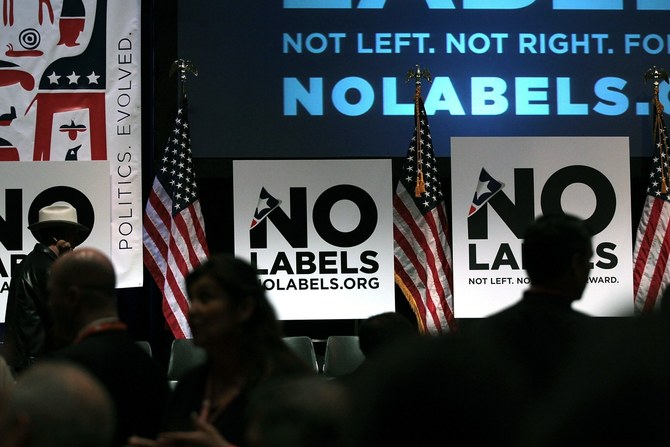Kerry Boyd Anderson
The No Labels group is gaining attention in the US as it takes steps to potentially mount a third-party presidential campaign. The group is considering a “unity ticket” that includes a Democratic and a Republican candidate for president and vice president, though it is not yet clear who the candidates would be. However, the No Labels movement faces blistering criticism from political scientists, strategists and Democrats, who argue that a third party has no chance of winning the presidential election and would likely benefit the Republican candidate.
The structure of the US political system makes it very difficult for a third party to successfully compete for the presidency. The US president is not elected by a majority of the nationwide vote (known as the popular vote). Rather, the president is chosen through the Electoral College process. Each state receives a specific number of “electors” in the Electoral College, based on that state’s number of representatives and senators in Congress. All the states except for two allocate all of their votes in the Electoral College to whichever candidate wins the most votes in that state’s election. For example, Virginia has 13 electoral votes; in 2020, Joe Biden won a majority of votes in Virginia, so he received all 13 of Virginia’s votes in the Electoral College. Whichever candidate wins a majority in the Electoral College becomes president.
This system has many implications, including that a candidate can lose the popular vote and still win the presidency through the Electoral College. Another consequence is that the system naturally benefits a two-party structure. Third-party candidates have run for president many times, but no third party has won a presidential election in the post-Civil War era. Alternative candidates often have little impact. However, in some elections, third-party candidates played a significant role by siphoning off votes from the Republican or Democratic candidate. In the very tight 2000 election, left-wing candidate Ralph Nader won votes from Democratic candidate Al Gore in the crucial state of Florida, thus helping to hand the presidency to Republican George W. Bush. In 1992, third-party candidate Ross Perot arguably chipped away at votes for Republican George H.W. Bush to the benefit of Democrat Bill Clinton. In 1912, former Republican President Theodore Roosevelt formed a third party to challenge Republican President William Taft; his campaign split the Republican vote, allowing Democrat Woodrow Wilson to win.
Critics of third-party efforts point to this history. The Electoral College makes it extremely difficult for a third party to win. For example, in 1992, Perot won 19 percent of the popular vote but did not win any Electoral College votes. A successful third party would have to win the most votes in enough states to win a majority in the Electoral College – an extremely tall order. Furthermore, many voters are aware that the odds are against a third party and would rather use their vote to support a candidate who might win, so even many voters who might prefer the third-party candidate will vote for a Republican or a Democrat. Some political figures argue that now is the time to challenge the two-party trend. Polls show that many Americans are disillusioned with their options. A 2021 Gallup poll found that 62 percent of respondents said that “parties do such a poor job representing the American people that a third party is needed.” Recent polling has found that a majority of Americans do not want Biden or Donald Trump to run again.
The No Labels group and other third-party advocates point to these views and argue that there is room for a third party to win the presidency. No Labels adds that a centrist candidate would take votes away from both parties rather than acting as a spoiler. However, many critics – including many associated with centrist movements – argue that a No Labels campaign would benefit the Republican candidate. Historical precedent provides much of the evidence that a third party cannot win but can damage one of the primary party candidates, often the candidate that is politically closest to the third party.
No Labels is also far too optimistic about the number of Americans who would abandon the Republicans or Democrats. Third-party advocates often note that many Americans identify as independent voters, but polling experts counter that most of those independents lean heavily toward Republicans or Democrats when voting. For example, the Pew Research Center has reported that 38 percent of Americans say they are independents, but only 7 percent actually do not lean toward a party when voting. Furthermore, not all independents are centrists. Critics of No Labels’ potential campaign point to other problems, including questions about the group’s strategy. Many of the critics argue that No Labels is presenting a false equivalency by suggesting that a second Biden or Trump presidency is equally concerning and warn that a No Labels campaign would aid Trump, should he win the Republican nomination. Indeed, given today’s makeup of the Republican and Democratic parties and Electoral College realities, a No Labels campaign would likely pull votes away from Biden. Modern presidential races tend to be tight, so damaging Biden in only one or two key states could be very consequential.
A while ago, some Republican leaders were concerned that Trump might launch his own third-party bid. If he did, it would likely divide the Republican constituency to the Democrats’ benefit. The reality is that any third-party presidential campaign is extremely unlikely to win and very likely to damage one of the primary candidates. It would be a huge gamble with incredibly deep consequences.







